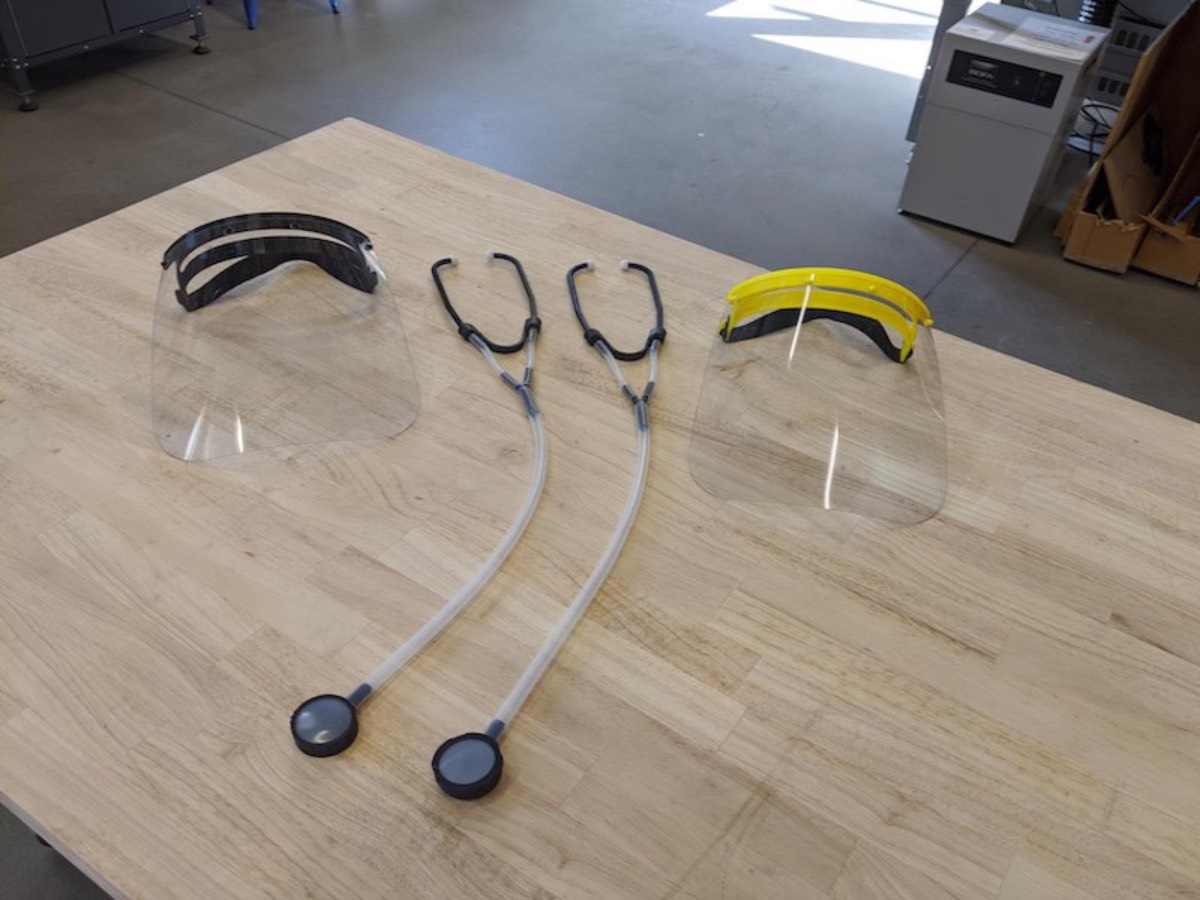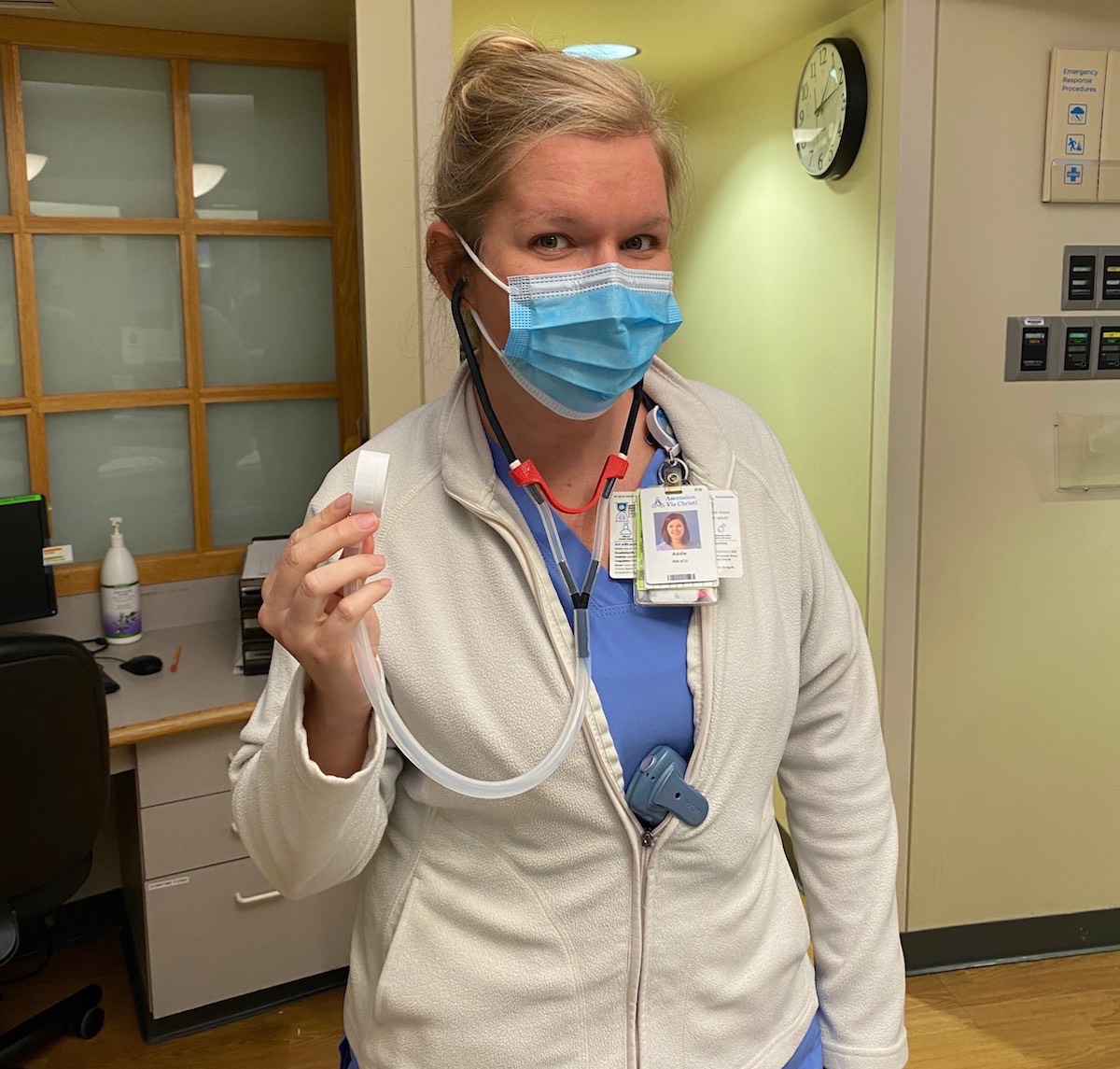In March when Ascension Via Christi needed stethoscopes, its usual supply chains had dried up. Wichita State University engineers, working as part of the newly formed Ad Astra Coalition, quickly established a new supply chain to address the urgent need.
“The whole things has just been phenomenal to watch,” said David Alexander, vice president of philanthropy at Ascension Via Christi.
Ascension Via Christi staff knew 3D printers could produce temporary-use stethoscopes. And they knew Wichita State, and others, could work fast with 3D printers because of their experience with face shields produced early in the pandemic by a community group.
“We had no idea how the quality would translate,” Alexander said. “When they were done, they were able to produce a product that is far superior to the disposable stethoscopes that our supply-chain folks would buy. Our nurses and clinicians are just raving about how good they are.”
A coalition of businesses and government partners, the Ad Astra Coalition has joined together to answer some of the challenges being created in Wichita and Kansas by the COVID-19 pandemic. The coalition, formed in early April, is co-led by Airbus Americas Engineering, Spirit AeroSystems, Textron Aviation, Wichita State University and WSU Tech.
Wichita State’s 3D printers in the College of Engineering and at GoCreate, a Koch collaborative, along with others, kept busy during the pandemic, producing medical supplies.
The Combating COVID-19 As A Community team, which started in mid-March, made more than 7,750 face shields. Combating COVID-19 As A Community was led by Sergeant Teddy Wisely of the Wichita Police Department, Ascension Via Christi and Wichita State with help from Gregory Inc. of Hutchinson, Wichita’s Groover Labs, McConnell Air Force Base’s XPX Innovation team and Pittsburg State University.
Most went to Ascension Via Christi, which helped with funding, final assembly and sanitizing. Around 10-12 groups, including 18 rural hospitals, Wichita Police Department, Sedgwick County Sheriff’s Office, the city of Wellington and U.S. Army Fort Riley, also received face shields.
vice president of philanthropy at Ascension Via Christi
Wichita State’s work with that group helped the transition to making around 2,000 stethoscopes with the Ad Astra Coalition. NIAR, Airbus and the Combating COVID-19 As A Community team also pitched in with 3D printers.
“We went through 30 revisions in a matter of two weeks and in a two-to-three-week timeline, we had locked in something really good,” said Nathan Smith, Project Innovation Hub manager for Wichita State University’s College of Engineering. “It was pretty fast.”
Alexander said Ascension Via Christi is using some of the stethoscopes to build its supply for future use and share others with smaller hospitals around the state.
“We had a lot of good engineering people working on this that take a lot of pride into what they design,” Alexander said. “They wouldn’t stop until they came up with one that was durable enough. We’ve got some good engineering minds out at Wichita State.”
The stethoscopes are designed to stay with a potential COVID-19 patient until disposal.
 Nathan Smith
Nathan Smith
“They need stethoscopes that travel with the patient,” Smith said. “They would stay with them in their room and they would be sterilized before and after every single use, but they would never leave the room. You should have no possibility of spreading the infection.”
The reaction to the delivery of the stethoscopes and face shields stuck with Alexander when they sought feedback from nurses and others working on the COVID floors.
“It blew me away,” he said. “They had such a sense of relief that we were going to put protective material into their hands - some broke down and cried and I wasn’t expecting that. It really brought great peace of mind to be able to give them this locally produced PPE. It’s there to protect them and also our patients.”


 Courtesy photo
Courtesy photo